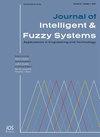基于混合深度学习的瑜伽姿势识别模型的人工藻类优化器
IF 1
4区 计算机科学
Q3 COMPUTER SCIENCE, ARTIFICIAL INTELLIGENCE
引用次数: 0
摘要
由于现代生活方式中紧张程度的增加,许多人对学习瑜伽感兴趣,并且有各种各样的技术或资源可用。瑜伽可以在瑜伽中心,由私人教练,通过书籍,互联网,录制视频等方式练习。由于上述资源可能并不总是可用的,许多人将在快节奏的生活方式中选择自学。自学使人无法识别不正确的姿势。不正确的姿势会对病人的健康产生负面影响,造成严重的痛苦和长期的慢性问题。计算机视觉(CV)相关技术利用非侵入性的CV方法推导姿态特征并进行姿态分析。机器学习(ML)和人工智能(AI)技术在瑜伽等跨学科领域的应用变得相当困难。由于其强大的特征学习能力,深度学习(DL)最近在瑜伽姿势分类方面取得了令人印象深刻的表现。提出了一种基于混合深度学习的瑜伽姿态估计(AAOHDL-YPE)模型的人工藻类优化器。提出的AAOHDL-YPE模型通过分析瑜伽视频片段来估计姿势。利用零件置信度图和零件关联域,结合二部等价和解析,OpenPose可以确定关节的位置。然后将深度信念网络(DBN)模型用于瑜伽识别。最后,利用AAO算法增强了effentnet模型的识别性能。综合实验分析结果表明,与现有方法相比,AAOHDL-YPE技术产生了优越的结果。本文章由计算机程序翻译,如有差异,请以英文原文为准。
Artificial algae optimizer with hybrid deep learning based yoga posture recognition model
Numerous people are interested in learning yoga due to the increased tension levels in the modern lifestyle, and there are a variety of techniques or resources available. Yoga is practiced in yoga centers, by personal instructors, and through books, the Internet, recorded videos, etc. As the aforementioned resources may not always be available, a large number of people will opt for self-study in fast-paced lifestyles. Self-learning makes it impossible to recognize an incorrect posture. Incorrect poses will have a negative effect on the patient’s health, causing severe agony and long-term chronic issues. Computer vision (CV)-related techniques derive pose features and conduct pose analysis using non-invasive CV methods. The application of machine learning (ML) and artificial intelligence (AI) techniques to an inter-disciplinary field like yoga becomes quite difficult. Due to its potent feature learning ability, deep learning (DL) has recently achieved an impressive level of performance in classifying yoga poses. In this paper, an artificial algae optimizer with hybrid deep learning-based yoga pose estimation (AAOHDL-YPE) model is presented. The presented AAOHDL-YPE model analyzes yoga video clips to estimate pose. Utilizing Part Confidence Map and Part Affinity Field with bipartite equivalent and parsing, OpenPose can be employed to determine the joint location. The deep belief network (DBN) model is then used for Yoga recognition. Finally, the AAO algorithm is utilized to enhance the EfficientNet model’s recognition performance. The results of a comprehensive experimentation analysis reveal that the AAOHDL-YPE technique produces superior results in comparison to existing methods.
求助全文
通过发布文献求助,成功后即可免费获取论文全文。
去求助
来源期刊

Journal of Intelligent & Fuzzy Systems
工程技术-计算机:人工智能
CiteScore
3.40
自引率
10.00%
发文量
965
审稿时长
5.1 months
期刊介绍:
The purpose of the Journal of Intelligent & Fuzzy Systems: Applications in Engineering and Technology is to foster advancements of knowledge and help disseminate results concerning recent applications and case studies in the areas of fuzzy logic, intelligent systems, and web-based applications among working professionals and professionals in education and research, covering a broad cross-section of technical disciplines.
 求助内容:
求助内容: 应助结果提醒方式:
应助结果提醒方式:


